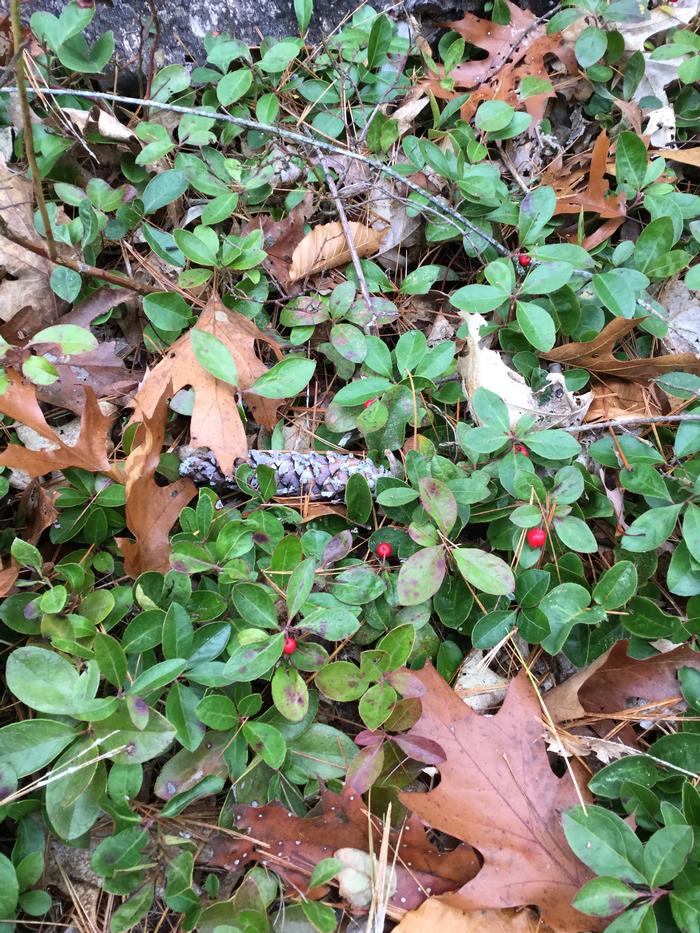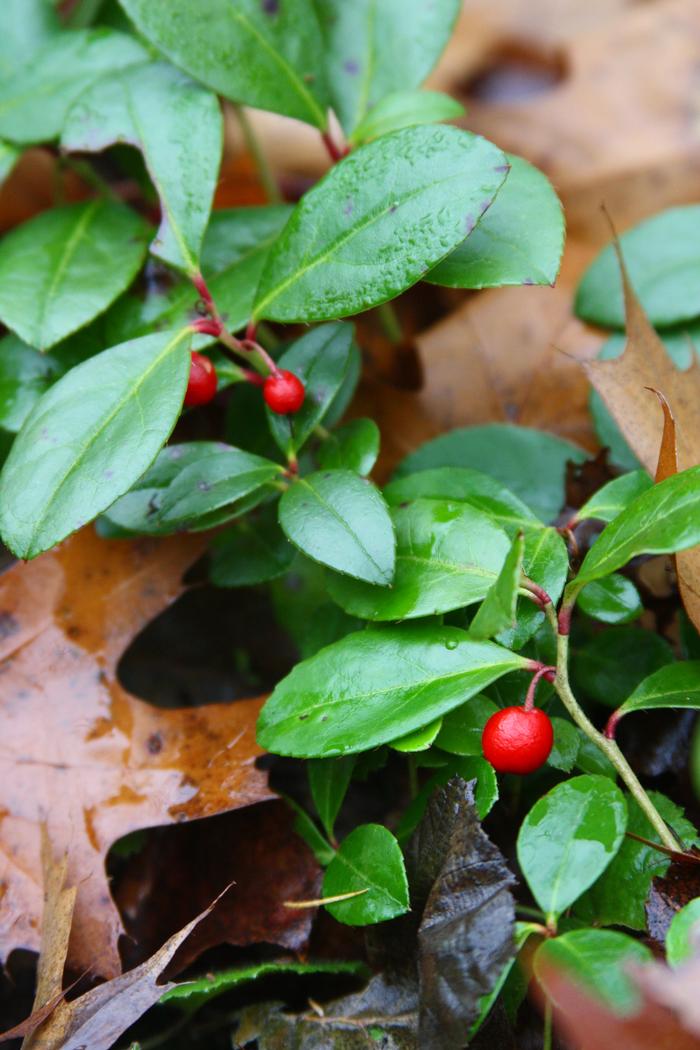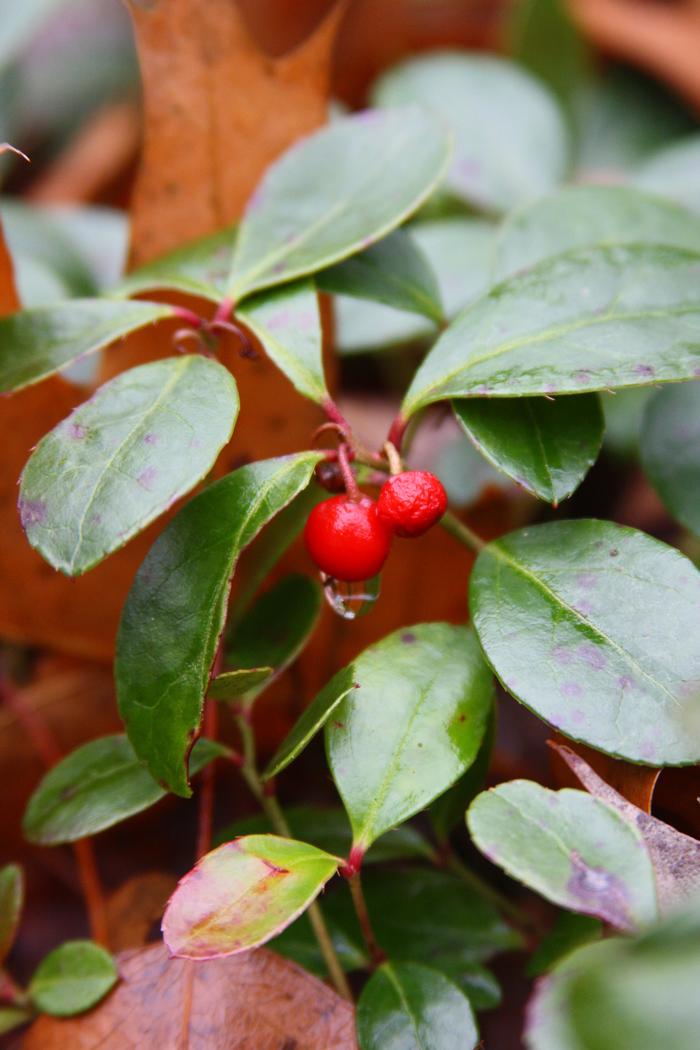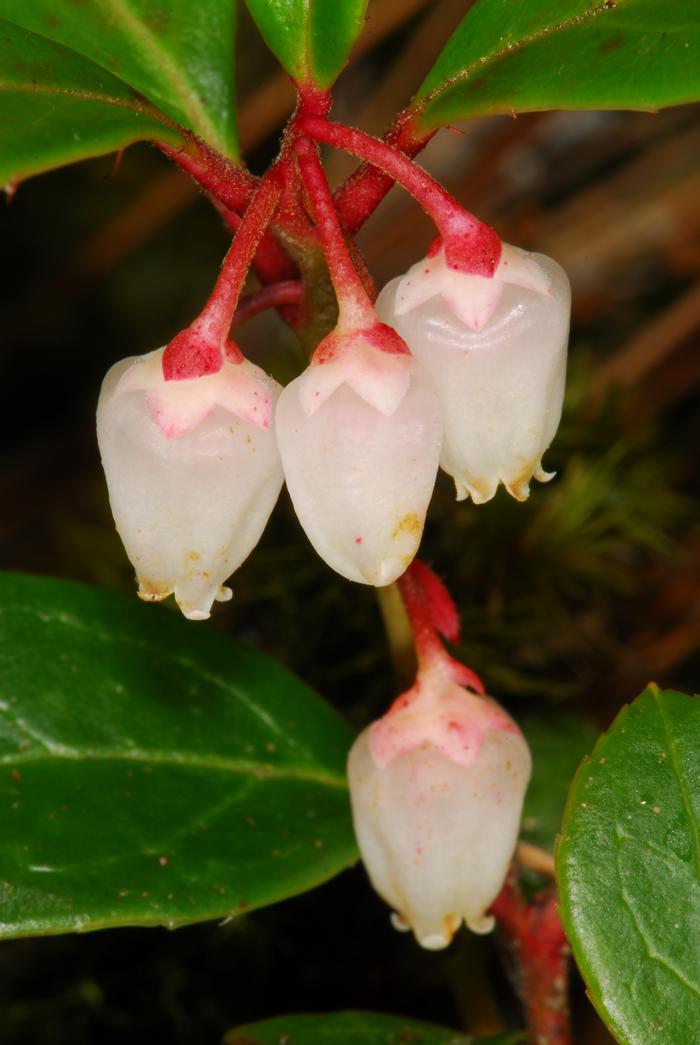General Description
Bloom Description: Bell shaped flowers typical of plants in the blueberry family. They bloom in early summer, but can go unnoticed because the plant is small and the flowers droop.
Growth Habit & Shape: Low, creeping plant that will create clonal mats from rhizomes. Slow growing plant that can be outcompeted by more aggressive ground covers.
Soil Preferences: Grows best in moist well-drained soil but can handle dry, loamy soils. Often found in coniferous forests with acidic soils.
Root Description: Shallow, running roots that can create colonies in the right conditions.
Garden Uses: Borders, woodland gardens, rock gardens, shade gardens, and naturalized areas.
Best Management & Maintenance: Prefers shade to part shade environments. To showcase the flowers and fruits, plant on hillside next to the trail to provide a better view.
Common Problems: May have issues with mildew and leaf spot but not very common. Also aphids and thrips may cause feeding damage occasionally.
Benefits
Ornamental Value: Evergreen leaves provide year round interest and when temperatures drop the leaves turn red. Leaves also emit an evergreen smell when crushed. Bright red fruits in the fall are showy.
Wildlife Benefits: Both the fruit and leaves provide food for wildlife during the winter. Animals that benefit are white tailed deer, wild turkey, sharp tailed grouse, northern bobwhite, ring-necked pheasant, black bear, white footed mouse, red fox, and eastern chipmunk. Browsing is rarely significant enough to kill the plant.
Other Practical/Environmental Benefits: Can handle heavy shade, drought, deer resistant, soil compaction, and heat
Use in place of: Cotoneaster
Ecology
Habitat:
Often found in New England’s pine and hardwood forest’s understories.
Response to Disturbance: G. procumbens can handle some browsing, but is slow growing so it does not respond well to large disturbance events.
Native State Distributions:
Canada: MB, NB, NF, NS, ON, PE, QC
USA: AL, CT, DC, DE, GA, IL, IN, KY, MA, MD, ME, MI, MN, NC, NH, NJ, NY, OH, PA, RI, SC, TN, VA, VT, WI, WV
Wetland indicator status: FACU
Companion Plants:
Blueberry (Vaccinium spp.), mountain laurel (Kalmia latifolia), Partridgeberry (Mitchella repens), Pennsylvania sedge (Carex pensylvanica)
References
Return to Top




